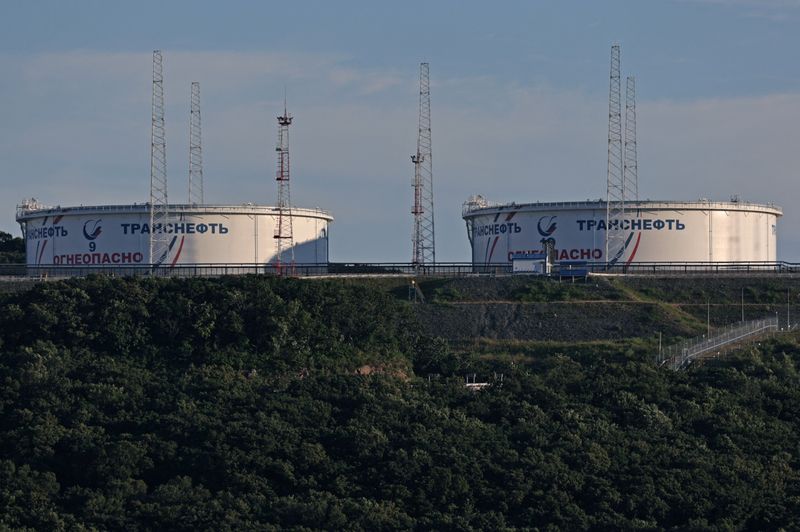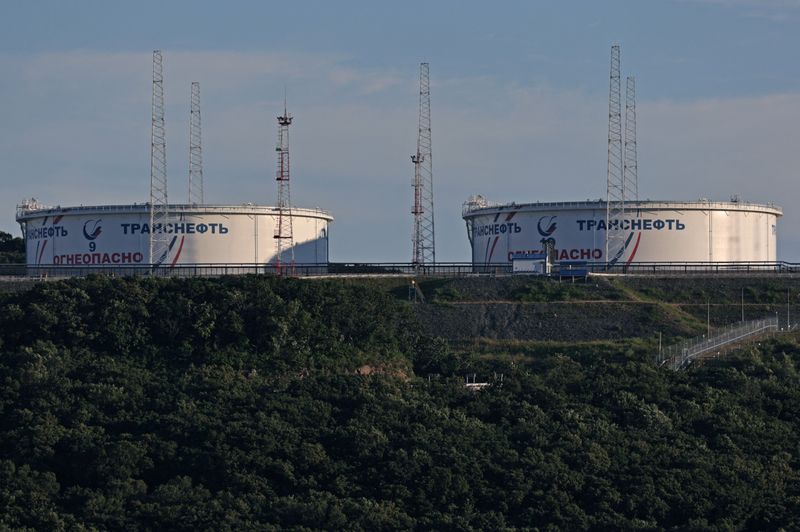
By Arathy Somasekhar
(Reuters) -Oil prices gained on Thursday as crude stocks fell after U.S. refineries ramped up processing and as gasoline inventories eased, signalling stronger demand.
Brent futures rose 62 cents, or 0.73% to $85.70 a barrel by 0620 GMT. U.S. West Texas Intermediate (WTI) crude rose 60 cents, or 0.73%, to $82.70 a barrel.
“The bounce back is largely due to the continued drawdowns in U.S. inventories as reported by the EIA,” DBS bank energy sector team lead Suvro Sarkar told Reuters, referring to the Energy Information Administration.
U.S. crude inventories fell by 3.4 million barrels to 445.1 million barrels in the week ended July 5, far exceeding analysts’ expectations in a Reuters poll for a 1.3 million-barrel draw.
Gasoline stocks fell by 2 million barrels to 229.7 million barrels, much bigger than the 600,000-barrel draw analysts expected during the U.S. Fourth of July holiday week.
The Organization of the Petroleum Exporting Countries also stuck to its forecast for relatively strong growth in global oil demand in 2024 and next year, saying on Wednesday that resilient economic growth and air travel would support fuel use in the summer months.
“There will likely be more bullish factors than bearish, supporting oil prices in the interim,” Sarkar said.
Gains were, however, capped as supply disruptions at refineries and offshore production facilities from hurricane Beryl were minimal.
Meanwhile, U.S. inflation data due this week include the Consumer Price Index on Thursday and the Producer Price Index report on Friday, both of which could set the tone for the market.
Expectations of a 25-basis-point rate cut by September ticked up to 74% from around 70% on Tuesday and 45% a month ago, according to CME’s FedWatch.

Lower interest rates decrease the cost of borrowing, which can boost economic activity and oil demand.
Federal Reserve Chair Jerome Powell said on Wednesday the U.S. central bank will make interest rate decisions “when and as” they are needed, pushing back on a suggestion that a September rate cut could be seen as a political act ahead of the fall presidential election.
This post is originally published on INVESTING.




